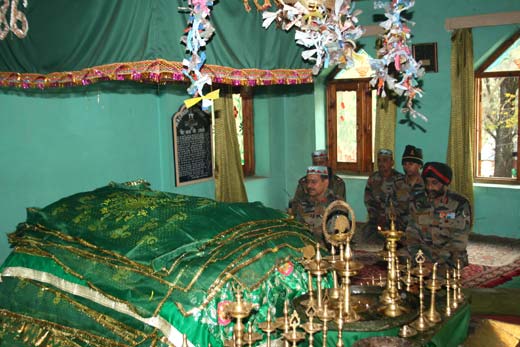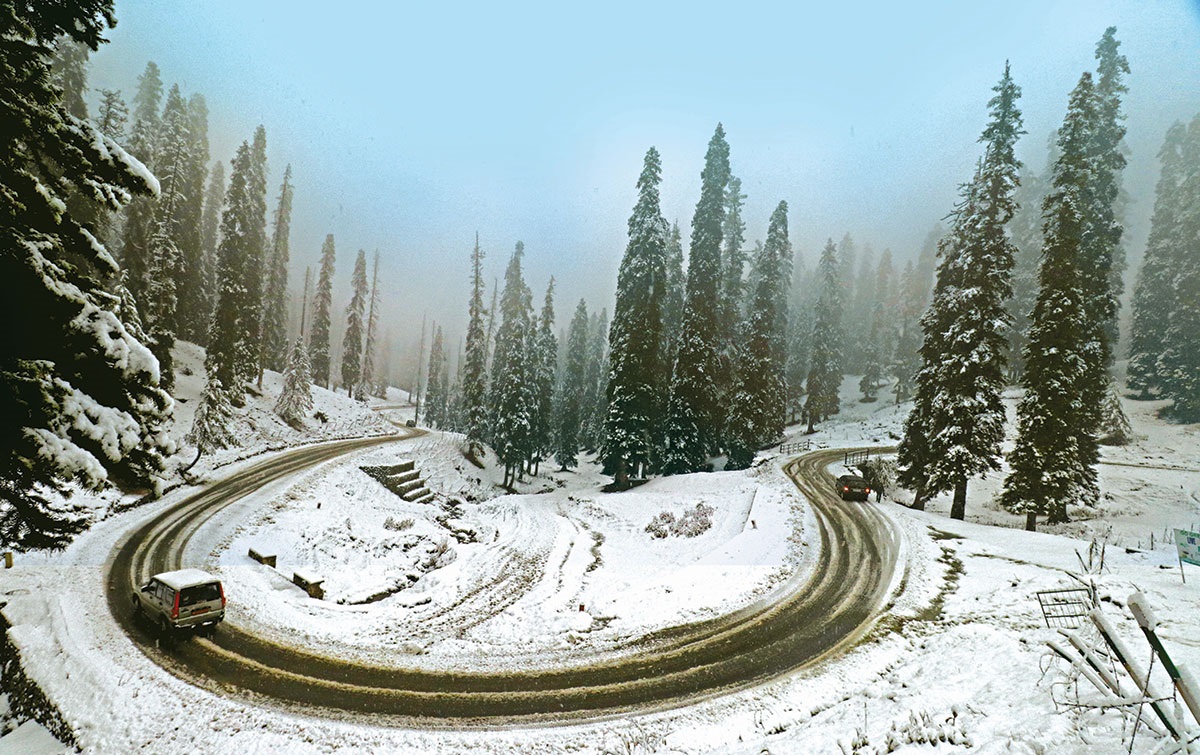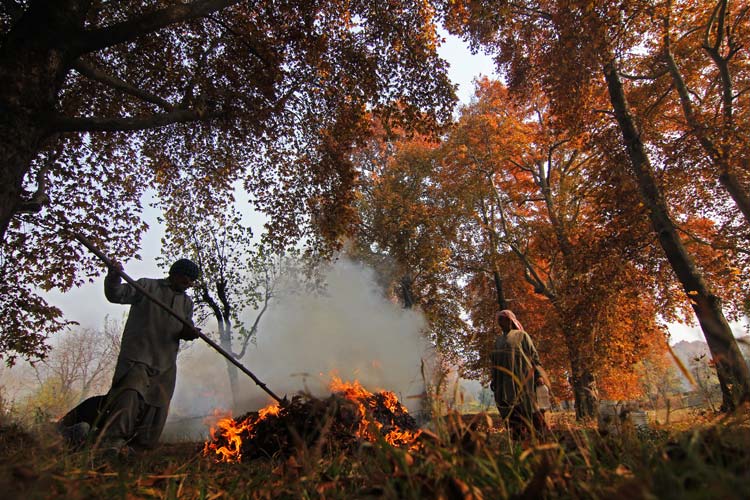As Hilal Ahmad went visiting a Leepa Valley shrine wrested from Pakistan in 1971, he found two specific regiments of rival armies facing each other for the first time they fought Kargil in 1999.

In the remotest part of Kashmir, deep inside Kupwara, in Tootmar Khan Gali overlooking Leepa Valley, Indian soldiers pray for peace at a dargah of Peer Sakhi Shah (RA).
Devoid of any habitation, the dargah is a point of spiritual solace for Indian soldiers, who are now its caretakers. The dargah became abode of soldiers when the entire NavKot and Chani villages, had migrated to other side of LoC during 1971 war, leaving this dargah and an adjoining mosque forlorn.
Besides soldiers, there is a shepherd, Abdul Rahman Kumhar, who also takes care and conducts prayers. Kumhar, in search of his lost cattle, had discovered that Pakistan troops had abandoned the posts in 1971.On his return, he informed Indian troops, who immediately marched and captured the area.
Not only Dargah, in the backdrop of Kafir Khan mountainous range, crisscrossing the LoC is underground fully furnished Army hospital, just on the edges of the fence. The hospital displays a plaque “inaugurated by Capt Pervez Musharraf”. He is the General Pervez Musharraf of Pakistan. Though may be history in his country, but he still lives in Indian country.
The area was captured by Indian Army in 1971 and Musharraf then a captain was injured here. But before retreating, he had built this fully furnished hospital. This architectural feat involving chiseling mountains from inside is now attending to injured and ailing Indian soldiers.
With an occasional gunshot, the err calm of beautiful surroundings abundant with lush green forests is shattered. Speculation are rife that tensions would escalate, as 26 Punjab regiment of Pakistan Army and 17 Garwal from Indian side, who fought during Kargil war in 1999 are face-to-face once again in this region. Driving from the last habitat of Reshiwari in Mawar region towards the LoC, the tension is palpable. The deodar and coniferous trees have taken burnt of mortar shelling.
Pointing towards Pakistani posts of Yedhin 1&2, Chandmastana and Pocket 1, a senior Army officer boasts India’s advantageous positions in this region. This is in contrast to Poonch and Krishnaghati, where Pakistan has advantage of heights and infrastructure. “Unlike flag meetings, the only communication we have is through gun fire in this region” says a Colonol, who is commanding troops in this remotest part.
Despite claims of having advantage, still the area has witnessed 100 infiltration attempts and reported killing of 15 militants. “It is like a sieve. We do detect and eliminate them. But some of them do penetrate the sieve,” says the officer of 1-Gorkha Rifles (GR). Over past one year, Army has also lost 10 soldiers in this region. The fence has made job a bit easier to detect infiltrations. But there are others in the Army, who believe while the fence has checked infiltration, it has hampered India’s offensive and surprise capabilities as well. “Pakistani binoculars are constantly watching fence gates and take note of our movements. Infact, it has reduced areas for them as well to keep tabs around gates rather focus on a large area dotted with ravines and thick foliage,” argues another officer.
In Delhi, however, the security grid is seeking additional funds of Rs. 2500 crore to make the fence an all-weather protection that can withstand snowfall and the modern techniques of subversion. Sources say the proposal is awaiting a nod from the PMO.
A major contribution of the ceasefire has been construction of roads and infrastructure in the region, which was hampered by Pakistan’s booming guns prior to 2003. Even as Army officers refuse to say that ceasefire of 2003 has been buried, as violations so far are occasional and restricted through medium and small arms, both at Paiwan Zali artillery unit manning Bofors guns (25 kms from LoC) and at the BSF artillery’s advanced Taj camp, big guns are out of sheds and are being oiled every day for any venture.
The porters and soldiers are abundant with stories and anecdotes. How they used to attend a bitch, who had crossed the LoC. But later detected, she was a trained Pakistani spy dog. She would steal papers and take them across during night. No officer could confirm it. But soldiers say, after detecting this bitch was actually a trained spy, they killed her few years ago. And another story of a Pakistani commando, who had enrolled himself as potter. But one fine night killed his fellow porters and soldiers sparing only the cook. Since then all porters are locked after 7 p.m and even for natural call, they are told to defecate in their long shoes. Pointing towards Bidrun ravines, a porter recalls that in 1992, some 80 militants were killed here after a fierce battle than ran over many days. Gunship helicopters were used to flush out militants from this ravine.
A 100 kms form this region, in another border area of Uri, a sarpanch Laldin complains that Army has closed two gates of the fence leading to his village Churanda. “Our children are not able to attend to schools and villagers in need of medical attention are not in position to move out. It is an open jail. They have virtually handed us over to Pakistan” he says.
Nadeem Akber Abasi, sarpanch of Gowalda village, near Zero Line in Uri sector says they had started to revive their lives after 2003 cease fire agreement between India and Pakistan. “We used to live in underground bunkers, But October 2005 tremors have destroyed them. We built concrete houses, schools and health centers as the aid and donations followed. But now fears are rampant they will go in drain,” he said. The fears are compounded by reports that villages across the LoC have started moving to safer places. “Some 40 families or 300 people have left their homes in 10 villages in Nakyal sector across LoC,” he adds.















